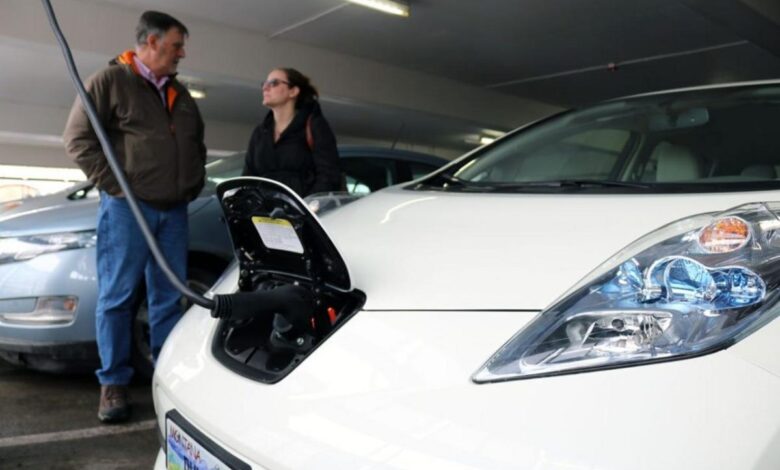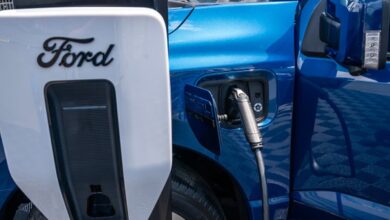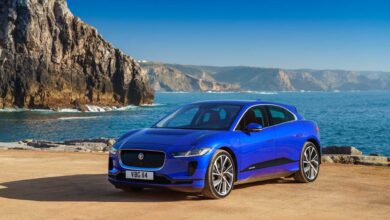Owning an EV is fun, clean and easy

Elaine Caton
A lot of what we hear in the media about electric vehicles can be discouraging to anyone even considering buying one, and I had a lot of those concerns as well. Can you find places to charge them? Are they affordable? Do they just trade one environmental problem for another? Are they more dangerous to drive? I’ve found out that a lot of what we hear is exaggerated or just untrue.
My husband and I bought an electric vehicle just over a year ago. We spent a fair amount of time researching EVs and talking to local owners. We settled on a Chevy Bolt EUV (electric utility vehicle) in part because Bolts are the least expensive electric cars available, with some models starting at less than $24,000 new.
Importantly, the Bolt also qualifies for the full $7,500 federal tax credit because it is made in North America, including at least most of its battery components, which made it very affordable for a new car. Some other EVs qualify for the full amount, and some for a partial credit.
There are also $4,000 credits available for some used EVs, all making electric vehicles more affordable than the impression a lot of the media and other sources give. And of course, there are larger and more luxurious vehicles available.
We have been very happy with our decision. Although the primary reason we decided on an electric vehicle was out of concern about pollution, health, and climate change, I really like driving our EV for other reasons as well. It is quiet and fun to drive. There is no smelly exhaust. There are no gas fumes to breathe while filling up at a station. There is no oil to change, and very little maintenance in general.
We have eliminated our payments for gas and for oil changes, although of course EVs aren’t free to operate. But charging at home in Montana costs an average of about 3 cents per mile, while a gas vehicle that gets 30 mpg would cost about 12 cents per mile to drive at a gas price of $3.50/gal. If you drive 1000 miles per month, that’s about $30 vs. $120 per month. Over a year it’s a significant savings, and over the life of a car it can more than make up for price differences.
Our car can go about 270 miles on a full battery charge (just like a gas-powered vehicle, the range varies with driving conditions and speed, and was about 25% lower in very cold weather and with snow tires). We live in a very rural area, 30 miles from the nearest public charging station, but most EVs come with their own chargers that can be plugged into a regular 110 outlet (which charges slowly) or a 240 outlet like the one a clothes dryer uses, which charges much faster.
You can also buy home chargers that will charge as fast as the public ones, and fill the battery in 30 minutes or so. We usually just charge our car overnight at home with the charger that came with the car, and the battery is full by morning. I can easily make a couple of trips to the town where I do most of our shopping (over 100 miles round trip) before I need to recharge the car.
I really appreciate no more stops at the end of the day to fill the tank on the way out of town, especially when it’s -20 degrees and windy. It’s so easy to just plug the car in at home and forget about it until morning.
We have also made a couple of out of state trips in our EV. Because public charging stations are not yet as common as gas stations, longer trips require more planning and take a bit longer. It generally takes longer to fill a battery than a gas tank (although some EVs can add 100 miles worth of charge in less than 7 minutes, making it similar to a stop at a gas station).
But on my two-day trip to New Mexico, this wasn’t much of an issue. I easily spent the time the car was charging buying snacks or meals, getting coffee, using the restroom, catching up on texts and emails, etc. And there are many apps that show you locations of all charging stations. More public charging stations are coming online all the time, and with more and more people buying EVs each year, that rate will just increase. Electric cars are the fastest growing segment of the auto industry.
In general, EVs cut carbon emissions significantly, even if they were to mainly run on electricity from coal or gas plants. Although producing EVs release carbon and other pollutants, those are offset in a short time by the lack of pollution coming out of the tailpipe.
And while there are serious environmental and human-rights issues associated with some of the mining of battery components, these same issues have plagued the oil and gas industry since its beginning, in addition to all the health problems and misery caused by the pollution from transporting, refining, pumping, and burning those fuels in our cars. Once electric cars are manufactured, they emit little or no pollution, while gas-powered vehicles do so their entire lifespans.
In spite of concerns about battery life, most batteries actually last the lifetime of the car, and technology now allows battery components to be recycled and old batteries used for energy storage. There have been sensational stories about batteries catching fire in accidents, but fires are less common in EVs than in gas vehicles. For example, in Norway where more than 20% of cars on the road are electric, data from their emergency services agency shows that gas vehicles are six times more likely to catch fire. Reports from other countries show similar results.
Of course, EVs are far from perfect, and not everyone can or wants to buy an EV at this time. But there are almost 5,000 EVs registered in Montana, and the number is growing because they are a viable choice even in our big spaces and colder climate. If you are at all interested, don’t let the myths and sensational news stories scare you away.



